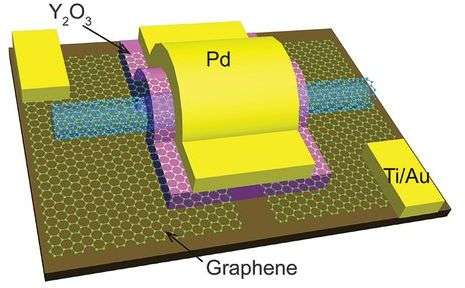Graphene nanotransistors Graphene nanotransistors Structure and function (based on PhD in nano-microelectronics) PhD in education and research
Researcher and author: Dr. ( Afshin Rashid)
Note: Graphene has certain electrical properties that make it a promising candidate for future nanoelectronics. While graphene, a single-dimensional carbon layer, is a conductive material, it can be transformed into a semiconductor in the form of nanowires. This means that it has enough energy or a band gap in which there is no electron mode - it can be turned on and off, and therefore may become a major component of nanotransistors.
The role of graphene nano-plates (GA) in the construction of nano-transistors as an electric field generated by the gate electrode controls the current generated by the two source and drain electrodes. The drain current is modulated by changing the density of the charge carriers in the two-dimensional transmission channel. In the nanotransistor, the effect of a multilayer Si graphene field is modulated by a three-dimensional transmission current channel with a three-dimensional transmission channel thickness . In the circuit diagram of a multilayer GA graphene field nanotransistor, two source and drain electrodes are connected directly to the semiconductor, while the gate electrode is capacitively connected to the semiconductor using a gate dielectric.
Numerous chemical and physical methods have been proposed for the production of various types of multilayer nano-graphene. The basis of the physical methods is that in these methods they try to eliminate the forces between the graphene plates in graphite and by separating them to reach the graphene or graphene oxide monolayers, which is the same method top- down. Is. In chemical methods, multilayer nano-graphene is made by putting together individual carbon atoms, which is also called the bottom-up method.
Graphene, a single-dimensional carbon layer, is a conductive material, but it can be converted into a semiconductor as a nanowire. This means that it has enough energy or a band gap in which there is no electron mode - it can be turned on and off, and therefore may become a major component of nanotransistors.
Researcher and author: Dr. ( Afshin Rashid)
PhD in Nano-Microelectronics




